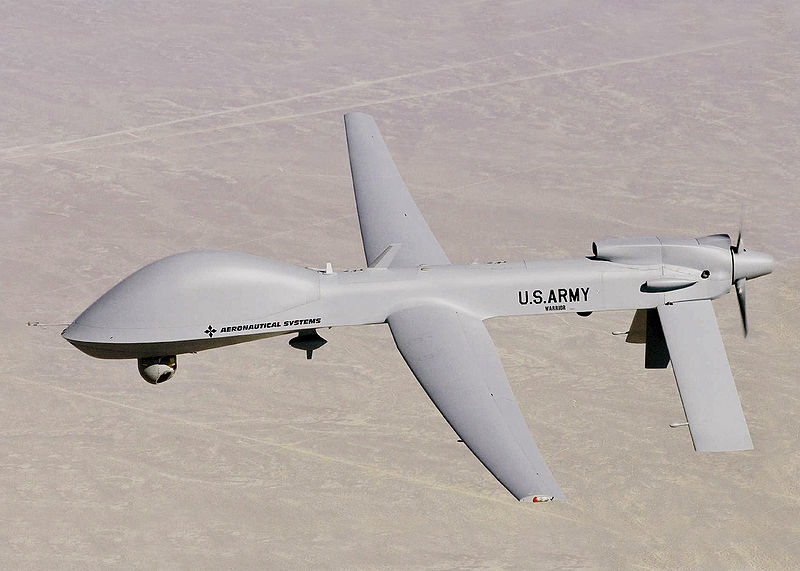The case study of the seventh chapter is about autonomous weapons. Autonomous weapons can be divided in two categories: The completely autonomous weapons, which raise huge ethical and legal issues because a computer program is taking the decision to kill a person, and the semi-autonomous weapons, which are robots controlled by a person who can be miles away from the robot. I want to focus on these second ones, more concretely on Remotely Piloted Aircraft Systems (RPAS), popularly known as drones.
On the recent years the U.S. Army has increased exponentially the use of drones. While completely autonomous weapons raise an unanimous outcry against their use, RPAS can be seen not only as a way to save the lives of the pilots if the things go wrong and the drone is destroyed, but as a way to allow pilots to live at home and work on the military base, away from war’s horrors. According to that the drones are a great invention that can save lives and increase the general welfare without any obvious concerns. But are they that good?
After analysing drones from an economic and welfare approach, we should take into account the ethical considerations. To determine if the use of drones is ethic or not we have to resort to philosophy. There are two thesis applicable to the drones case: The Extended Mind Thesis (EMT) and the Artifactual Mind Thesis (AMT). On one hand, the EMT, defended by the transhumanist philosophers, defends that when we are using technologic objects, such as a pen or a drone, they become our extension and we materialize our actions as if they were part of us. As an example, when a kid plays a videogame he don’t think that he has to press one button to allow his character to jump, he only thinks that he wants the character to jump and does it. Other examples could be driving a car or writing through a keyboard. As we can see, EMT would argue in favour of the drones because it considers them in an instrumentalist way, they are only a tool. On the other hand, the AMT, defended by the bionconservative philosophers, agrees to the EMT in considering the objects as an extension of the body but also consider them as an extension of the mind. At first sight that can sound very strange but that theory has lots of supporters. AMT supporters argue that the technology alters our perception and behaviour, leading to different reactions on the same person depending on which way he receives the information. Let’s take the RPAS example. Imagine that a pilot is driving an aircraft over a building where there is a terrorist leader but also lots of innocent civilians. If he was there driving the plane and he decided to throw a bomb over the building, he would feel really bad because HE threw the bomb and killed innocent civilians. Therefore, the same pilot throwing the same bomb may feel better (or less bad) if he was thousands of miles away controlling a drone because it was the drone who killed them.
